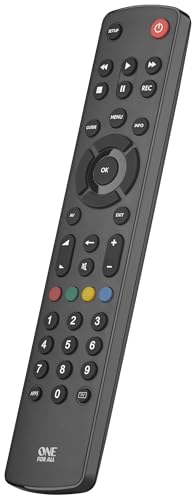The Importance of Syncing a Remote Control
As technology continues to advance, remote controls have become an integral part of our daily lives. Whether it’s for our televisions, streaming devices, or even our smart home devices, remote controls allow us to easily control and navigate through various functions and features. However, there may come a time when your remote control loses its synchronization with the device it operates. In such cases, it becomes crucial to understand how to sync a remote control and restore its functionality. In this article, we will explore the importance of syncing a remote control and provide step-by-step instructions on how to do it.
Step 1: Identify the Type of Remote Control
Before diving into the syncing process, it’s essential to identify the type of remote control you are using. Different devices may have different methods for syncing their remote controls. For example, a TV remote control may have a different syncing process compared to a streaming device remote control. By understanding the specific type of remote control you are dealing with, you can ensure that you follow the correct instructions for syncing.
Step 2: Check the Battery Level
One common reason for a remote control losing its synchronization is a low battery level. Before attempting to sync the remote control, it’s vital to check the battery level and replace the batteries if necessary. Most remote controls have a battery indicator light that will alert you when the battery level is low. Alternatively, you can try using the remote control with a different device to see if it responds properly. If the remote control functions properly with a different device, then the issue may likely be with the device you are trying to sync it with.
Step 3: Consult the Device’s Manual
Each device comes with a user manual that provides instructions on how to operate and troubleshoot any issues. When it comes to syncing a remote control, it’s always a good idea to consult the device’s manual for specific instructions. The manual will outline the exact procedure for syncing the remote control with the device and may also provide troubleshooting tips for common syncing issues. Make sure to thoroughly read and understand the instructions before proceeding with the syncing process.
Step 4: Follow the Syncing Instructions
Once you have identified the type of remote control, checked the battery level, and consulted the device’s manual, it’s time to proceed with the syncing process. The syncing instructions may vary depending on the device, but they generally involve pressing specific buttons or entering a unique code. Follow the instructions carefully, and pay attention to any prompts or feedback from the device to ensure successful syncing. If you encounter any difficulties or the remote control still does not work after syncing, consider reaching out to the manufacturer’s customer support for further assistance.
Step 5: Test and Troubleshoot
After completing the syncing process, it’s essential to test the remote control and ensure that it is functioning correctly. Test the various functions and features of the device to verify that the remote control is responding appropriately. If you notice any issues or the remote control still does not work as expected, try the following troubleshooting steps:
- Restart the device: Sometimes, a simple restart can help resolve syncing issues.
- Reset the remote control: Refer to the device’s manual for instructions on how to reset the remote control to its factory settings. This can often fix any underlying issues.
- Replace the remote control: If all else fails, it may be necessary to replace the remote control altogether. Contact the manufacturer or visit their official website to purchase a new remote control compatible with your device.
By following these steps and troubleshooting any potential issues, you can effectively sync your remote control and restore its functionality. Remember to always refer to the device’s manual for specific instructions and seek further assistance from the manufacturer if needed.






